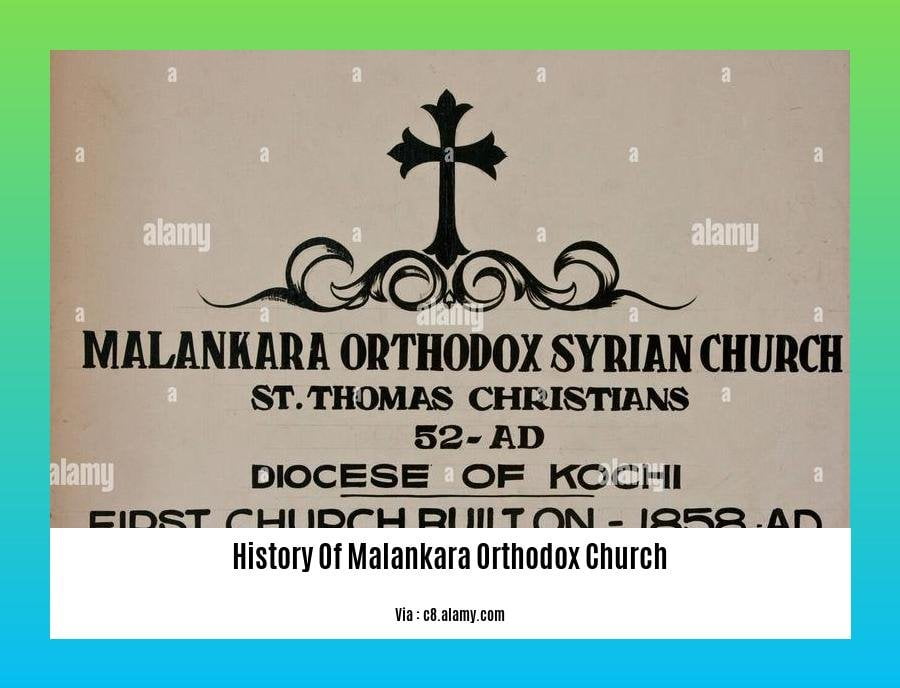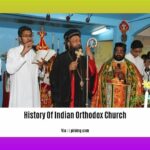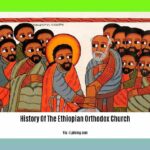Embark on a captivating journey through the annals of the Malankara Orthodox Church in “Unveiling the Historic Tapestry: A Journey Through the History of the Malankara Orthodox Church.” Immerse yourself in the profound heritage and unique traditions of this ancient Christian community as we delve into the tapestry of significant events, influential figures, and the enduring legacy that has shaped its existence.
Key Takeaways:
-
The Malankara Orthodox Church was founded in India by Saint Thomas, one of Jesus Christ’s twelve apostles, in 52 CE.
-
The church has a close relationship with the Persian or East Syrian Church since at least the 4th Century.
-
The Malankara Church originated in modern-day Kerala, India, from the mission of Thomas the Apostle in the 1st Century.
-
After the Coonan Cross Oath in 1653, the name “Malankara Church” was restricted to the church under the leadership of Marthoma I.
History of Malankara Orthodox Church
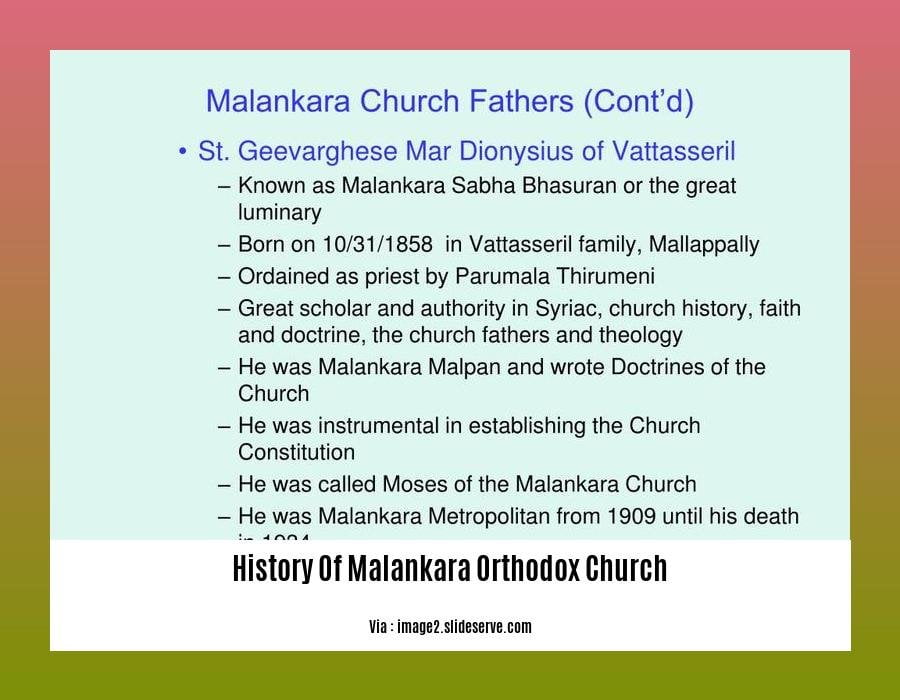
The Malankara Orthodox Church holds a profound history, rooted in the teachings of St. Thomas, one of Jesus Christ’s twelve apostles. This remarkable narrative spans across continents, entwined with the spiritual journeys of numerous individuals.
The history of the Malankara Orthodox Church is a captivating tale of faith, resilience, and profound spiritual connections. Founded by St. Thomas in 52 CE in India, the church has a rich tapestry of traditions and beliefs that set it apart as a unique branch of Christianity. Immerse yourself in this remarkable journey as we explore the key events, influential figures, and enduring legacy that have shaped the identity of the Malankara Orthodox Church, an ancient Christian community with roots tracing back to the first century.
The church’s close affinity with the Persian or East Syrian Church since the 4th century enriched its liturgical practices and theology. This connection played a crucial role in shaping the unique identity of the Malankara Orthodox Church.
Traditional accounts suggest that the Malankara Church originated in present-day Kerala, India, as a result of the missionary endeavors of Thomas the Apostle in the 1st century. This apostolic origin has been a defining characteristic of the church throughout its history.
A pivotal moment in the church’s history occurred in 1653 with the Coonan Cross Oath. This event led to the name “Malankara Church” being exclusively associated with the church under the leadership of Marthoma I. From this point forward, the unique traditions and identity of the Malankara Orthodox Church were firmly established.
The Malankara Orthodox Church has stood the test of time, enduring various challenges and emerging as a vibrant community of faith. Its heritage, rituals, and beliefs have been passed down through generations, shaping the lives of countless individuals who have found solace and guidance within its embrace.
-
Learn about the rich and vibrant history of Jamaica from ancient civilizations to modern times with our comprehensive timeline. history of jamaica timeline
-
Discover the fascinating evolution of Mexican clothing, from traditional indigenous attire to the vibrant colors and styles of today. history of mexican clothing
-
Embark on a journey through the history of the Mexican hat dance, a captivating tradition that combines music, movement, and colorful costumes. history of mexican hat dance
-
Immerse yourself in the vibrant sounds of Mexican music, from traditional mariachi bands to contemporary pop and rock. history of mexican music
Portuguese Influence and the Synod of Diamper
In the annals of the Malankara Orthodox Church, the Portuguese Influence and the Synod of Diamper stand as significant milestones that indelibly shaped its trajectory. In the 16th century, the arrival of Portuguese missionaries marked a pivotal juncture in the history of the Saint Thomas Christians, also known as Nasranis, who had maintained a distinct Christian identity on the Malabar Coast for centuries.
The Portuguese, driven by a zeal to propagate Catholicism, sought to bring the Saint Thomas Christians under the authority of the Roman Catholic Church. In 1599, Archbishop Aleixo de Meneses convened the Synod of Diamper, an ecclesiastical gathering aimed at eradicating Nestorianism, a theological doctrine deemed heretical by the Catholic Church, and implementing Latinization among the Saint Thomas Christians.
The Synod of Diamper, attended by 153 representatives of the Saint Thomas Christian community, ushered in a period of profound transformation. The synod’s decrees mandated the adoption of Catholic liturgy, theology, and practices, effectively aligning the Saint Thomas Christians with the Roman Catholic Church. These changes, however, sparked dissent and resistance among a faction of the community who remained steadfast in their adherence to their traditional beliefs and practices.
The Synod of Diamper’s impact on the Malankara Orthodox Church was far-reaching. It marked the beginning of a period of assimilation and acculturation, as the Saint Thomas Christians gradually adopted many aspects of Portuguese culture and Catholicism. The synod’s influence extended beyond ecclesiastical matters, touching upon language, customs, and social practices, leaving an enduring legacy that continues to shape the identity of the Malankara Orthodox Church today.
Key Takeaways:
- The Portuguese arrival in the 16th century marked a transformative period for the Saint Thomas Christians.
- The Synod of Diamper, convened in 1599, aimed to eradicate Nestorianism and implement Latinization among the Saint Thomas Christians.
- The synod’s decrees mandated the adoption of Catholic liturgy, theology, and practices, aligning the Saint Thomas Christians with the Roman Catholic Church.
- The Synod of Diamper sparked dissent and resistance among a faction of the community who remained steadfast in their traditional beliefs and practices.
- The synod’s impact on the Malankara Orthodox Church was far-reaching, influencing language, customs, and social practices, leaving a lasting legacy that continues to shape the church’s identity.
Citations:
- “Synod of Diamper.” Encyclopedia Britannica, Encyclopedia Britannica, Inc.,
- Neill, Stephen. A History of Christianity in India: The Beginnings to AD 1707. Cambridge University Press, 2004.
The Struggle for Autonomy and the Malankara Metropolitanate
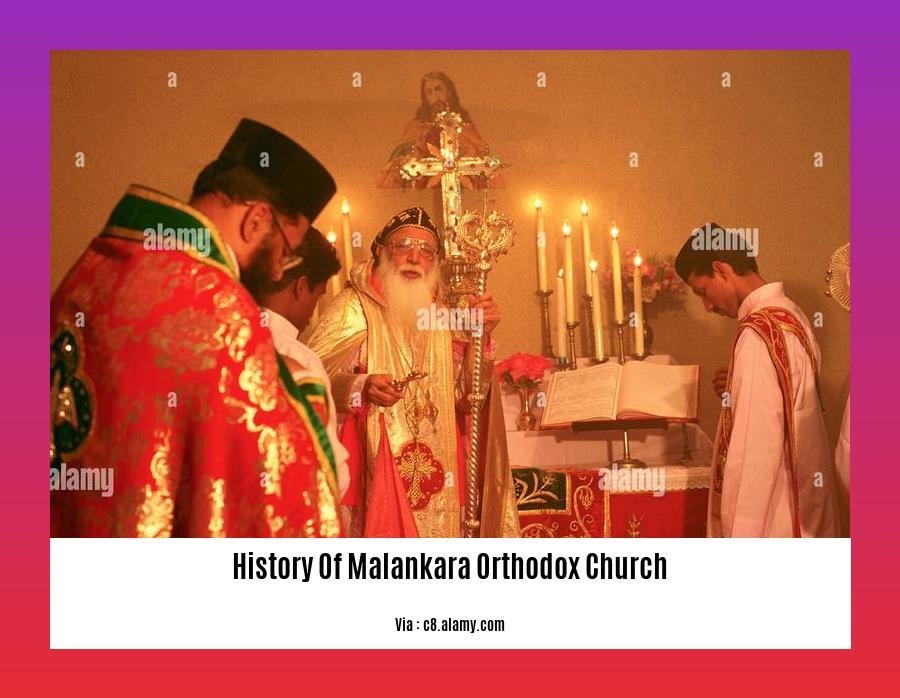
In the tapestry of ecclesiastical history, the Malankara Orthodox Church stands as a unique thread, its rich heritage intertwining with the tumultuous quest for autonomy. The church’s journey towards self-determination is a saga of trials, triumphs, and an unyielding spirit that defines its legacy.
The struggle for autonomy within the Malankara Orthodox Church can be traced to the 16th century with the arrival of Portuguese missionaries in India. Their attempts to assert control over the church led to deep divisions among the faithful, who longed to preserve their distinct identity and traditions.
A pivotal moment in this struggle was the Coonan Cross Oath of 1653, a symbolic act of defiance that marked the Malankara Church’s break from Portuguese authority. United under the leadership of Marthoma I, the community rallied to affirm its independence, thus establishing the Malankara Metropolitanate.
Yet, the path to autonomy was far from smooth. External pressures, legal challenges, and internal conflicts continued to test the resolve of the Malankara faithful. Colonial powers, eager to consolidate their influence, sought to manipulate the church’s affairs, leading to tensions with the colonial administration.
Amidst these challenges, the Malankara Orthodox Church remained steadfast in its pursuit of self-governance. Through perseverance, diplomacy, and the unwavering support of its members, the church gradually gained recognition and legitimacy.
In 1934, a historic milestone was reached with the enactment of the Malankara Syrian Christian Association Act. This act granted legal status to the church, formally recognizing its autonomy and paving the way for its future growth and development.
Today, the Malankara Orthodox Church stands as a vibrant and independent institution, a testament to the tenacity and faith of its forebears. The struggle for autonomy forged a deep sense of unity and resilience within the community, shaping its identity and solidifying its place in the annals of Christian history.
Key Takeaways:
- The Malankara Orthodox Church’s struggle for autonomy began in the 16th century with the arrival of Portuguese missionaries.
- The Coonan Cross Oath of 1653 marked a pivotal moment in the church’s quest for self-determination.
- Despite external pressures and internal conflicts, the Malankara faithful remained steadfast in their pursuit of independence.
- The Malankara Syrian Christian Association Act of 1934 granted legal status to the church, formally recognizing its autonomy.
- The struggle for autonomy shaped the identity of the Malankara Orthodox Church, fostering a deep sense of unity and resilience within the community.
References:
[The Malankara Orthodox Church: A Struggle for Autonomy:
[The History of the Malankara Orthodox Church:
The Modern Era and the Ecumenical Movement
Behold, the Malankara Orthodox Church, an ancient Christian community, emerged from the sands of time to embrace the winds of modernity and extend its wings into the realm of ecumenical endeavors. Let’s delve into the defining moments that transformed its course.
1934 marked the dawn of a new era, as the Malankara Orthodox Church formally declared the Malankara Metropolitan and the Catholicos of the East as one in its constitution. This bold move solidified the church’s unity and laid the foundation for its future growth and development.
The 20th century witnessed the inception of the ecumenical movement, a pivotal force that sought to bridge the divides between Christian denominations. The Malankara Orthodox Church, recognizing the transformative power of unity, actively embraced this movement, extending its hand in fellowship to other Christian communities.
The church’s commitment to ecumenical dialogue flourished in the years that followed. In 1961, it participated in the Second Vatican Council, a landmark event in the Catholic Church’s history. This gathering of Christian leaders fostered a spirit of understanding and cooperation among different denominations, setting the stage for further ecumenical endeavors.
As the church ventured beyond the confines of India, it established a presence in various corners of the globe. The first Malankara Orthodox church in North America was founded in 1925, paving the way for the establishment of numerous parishes and dioceses across the diaspora. This global outreach not only extended the church’s reach but also facilitated interfaith dialogue and understanding.
The church’s ecumenical efforts culminated in its membership in the World Council of Churches (WCC). Joining this global fellowship of Christian churches in 1963, the Malankara Orthodox Church reaffirmed its commitment to the principles of unity, cooperation, and witness. Through its active participation in WCC programs and initiatives, the church has contributed to the broader ecumenical movement, fostering unity and understanding among diverse Christian traditions.
Key Takeaways:
- The Malankara Orthodox Church’s declaration of unity in 1934 laid the foundation for its growth and development.
- The church actively embraced the ecumenical movement, fostering unity and cooperation with other Christian communities.
- Participation in the Second Vatican Council in 1961 demonstrated the church’s commitment to ecumenical dialogue.
- The establishment of parishes and dioceses in the diaspora extended the church’s reach and facilitated interfaith dialogue.
- Membership in the World Council of Churches (WCC) since 1963 solidified the church’s commitment to unity and understanding among diverse Christian traditions.
Citations:
- Malankara Orthodox Syrian Church – Wikipedia
- Indian Orthodox Church
FAQ
Q1: What is the significance of St. Thomas in the history of the Malankara Orthodox Church?
A1: According to tradition, the Malankara Orthodox Church traces its origins back to the mission of St. Thomas, one of Jesus Christ’s twelve apostles, in the 1st century. St. Thomas is believed to have established the church in modern-day Kerala, India, and is considered the patron saint of the Malankara Orthodox community.
Q2: How did the Malankara Orthodox Church come to be associated with the Persian or East Syrian Church?
A2: The Malankara Orthodox Church has a close relationship with the Persian or East Syrian Church, dating back to at least the 4th century. This connection is rooted in shared theological and liturgical traditions, as well as a common Syriac heritage.
Q3: What was the impact of the Coonan Cross Oath on the Malankara Orthodox Church?
A3: The Coonan Cross Oath, which took place in 1653, marked a significant turning point in the history of the Malankara Orthodox Church. As a result of the oath, the church was divided into two factions: those who remained under the authority of the Syrian Orthodox Patriarch and those who sought greater autonomy. This division led to the establishment of the Malankara Church under the leadership of Marthoma I.
Q4: What was the significance of the Synod of Diamper in the history of the Malankara Orthodox Church?
A4: The Synod of Diamper, held in 1599, was a significant event in the history of the Malankara Orthodox Church. Convened by the Portuguese archbishop of Goa, Aleixo de Meneses, the synod aimed to bring the Malankara Church under the authority of the Roman Catholic Church. The synod’s decisions led to a period of persecution for the Malankara Orthodox community, who resisted the attempts to Latinize their church.
Q5: Who is the current Catholicos of the East & Malankara Metropolitan of the Malankara Orthodox Church?
A5: The current Catholicos of the East & Malankara Metropolitan of the Malankara Orthodox Church is Baselios Marthoma Mathews III. He was enthroned on October 15, 2021, and is the spiritual leader of the Malankara Orthodox community worldwide.
- Unveiling the Enigma: Mansoureh Khojasteh Bagherzadeh’s Public Appearances & Private Life in Iran - July 18, 2025
- Unveiling the Mystery: Mansoureh Khojasteh Bagherzadeh’s Husband: A Rare Glimpse into a Private Life - July 18, 2025
- Unveiling Masoud Khamenei’s Mother: Power, Influence, and Iran’s Future - July 18, 2025
